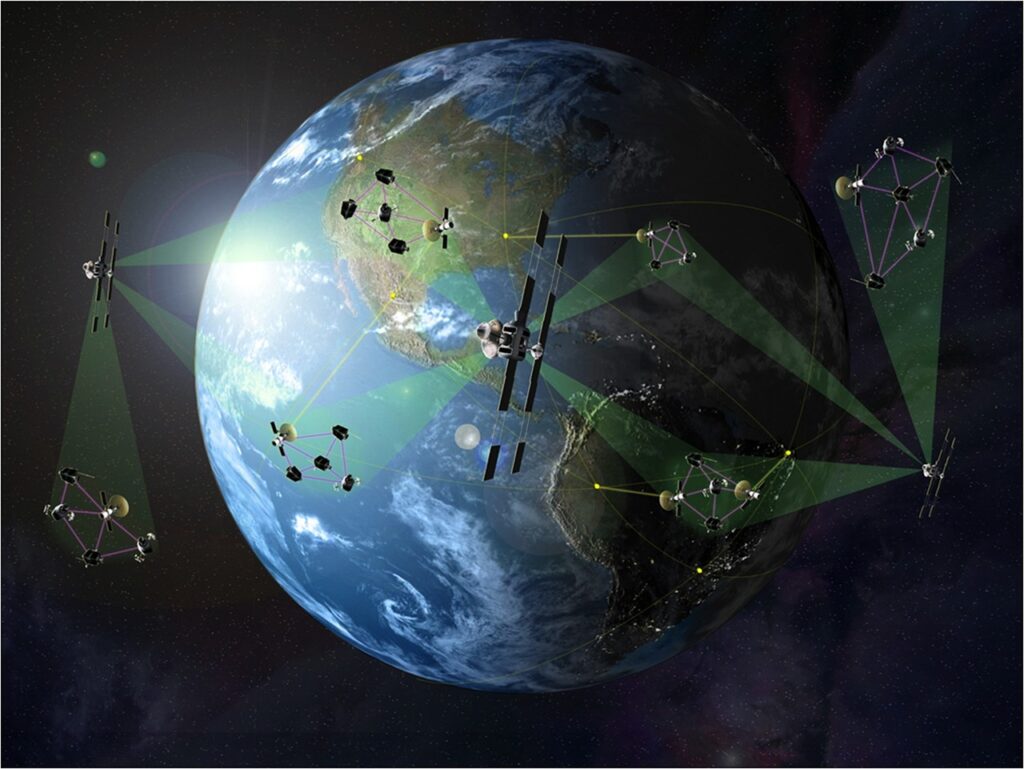In our increasingly interconnected world, Starlink, a satellite internet constellation developed by SpaceX, promising to revolutionize global connectivity. Starlink is redefining what’s possible. Let’s break down how this groundbreaking technology works, its real-world impact, and why it’s making headlines in 2023
Beyond individual connectivity, Starlink is also influencing the very infrastructure of the internet. Traditional internet relies on a complex web of terrestrial cables, which are vulnerable to damage from natural disasters or human activity. By creating a satellite-based backbone, Starlink offers a more resilient and redundant alternative. This is particularly crucial for critical infrastructure and national security.
At its core, Starlink is a network of thousands of low Earth orbit (LEO) satellites working in tandem to provide high-speed, low-latency internet access. Unlike traditional geostationary satellites, which orbit at a much higher altitude, LEO satellites are closer to Earth. This proximity significantly reduces the time it takes for data to travel, resulting in faster and more responsive internet connections.
Looking ahead, the integration of Starlink with other technologies, like 5G and edge computing, holds immense potential. Imagine a future where remote medical procedures are performed with minimal latency, or where autonomous vehicles navigate with pinpoint accuracy, all powered by seamless satellite connectivity. This convergence of technologies could usher in a new era of innovation and efficiency
Imagine it like this: traditional satellite internet is like trying to have a conversation with someone shouting from a mountaintop – the signal takes a long time to reach you, and it’s often garbled. Starlink, on the other hand, is like having that conversation with someone in the same room and the communication is immediate and clear.

Starlink boasts over 5,000 operational Starlink satellites in orbit. This number constantly fluctuates as SpaceX launches new Starlink satellites and deorbits older ones. You can often track the real-time location of these satellites through online resources, to check click on the link below 👇
sheer scale of the network.
The impact of Starlink is being felt across various sectors:
* Rural Connectivity: In remote and underserved areas where traditional internet infrastructure is impractical or nonexistent, Starlink is providing a lifeline. Farmers, educators, and healthcare providers are gaining access to online resources that were previously unavailable.
* Emergency Response: During natural disasters, when terrestrial communication networks are often disrupted, Starlink can provide crucial connectivity for emergency responders and affected communities. Its rapid deployment capabilities are a significant asset in disaster relief efforts.
* Maritime and Aviation: Ships and airplanes are benefiting from Starlink’s global coverage, enabling passengers and crew to stay connected while at sea or in the air. This is a game-changer for industries that rely on constant communication.
* Global Expansion: Starlink is rapidly expanding its coverage, with plans to reach even more remote and challenging locations. Recent data indicates that the service is available in over 60 countries, and that number continues to grow
While Starlink offers immense potential, it’s not without its challenges.
Satellite Congestion: The increasing number of Starlink satellites in LEO raises concerns about potential collisions and space debris. SpaceX is actively working to mitigate these risks through advanced tracking and deorbiting systems.
Astronomical Impact: Astronomers have expressed concerns about the brightness of Starlink satellites, which can interfere with astronomical observations. SpaceX has implemented measures to reduce satellite brightness, but the issue remains a topic of ongoing discussion.
Affordability: The cost of Starlink service and equipment can be a barrier for some users, particularly in developing countries. As the technology matures and production scales up, it’s hoped that prices will become more accessible.
Despite these challenges, Starlink is poised to play a pivotal role in shaping the future of global connectivity. By bridging the digital divide, it’s enabling individuals and communities to participate fully in the digital age.
The promise of Starlink isn’t just about faster internet speeds; it’s about unlocking human potential. Imagine a student in a remote village accessing world-class educational resources, or a small business owner connecting with customers around the globe. This is the power of connectivity, and Starlink is helping to make it a reality.
In conclusion, Starlink represents a significant leap forward in our quest for universal internet access. While challenges remain, the potential benefits are undeniable. As the network continues to expand and evolve, it’s likely to have a profound impact on how we live, work, and connect with each other.
You may also like to know about Blockchain Technology
Administrator
Welcome to Untold Theory, where innovation meets insight. We are dedicated to uncovering the hidden dimensions of technology, science, and the digital world. Our mission is to deliver 100% accurate content that keeps you ahead of the curve.we bring you the latest trends, deep dives into emerging technologies, and thought-provoking analyses—all designed to fuel your curiosity. Untold Theory is your go-to source for exploring the untold stories behind the world's most transformative ideas.Join us on this journey of discovery, where every article sheds light on the theories shaping our future.